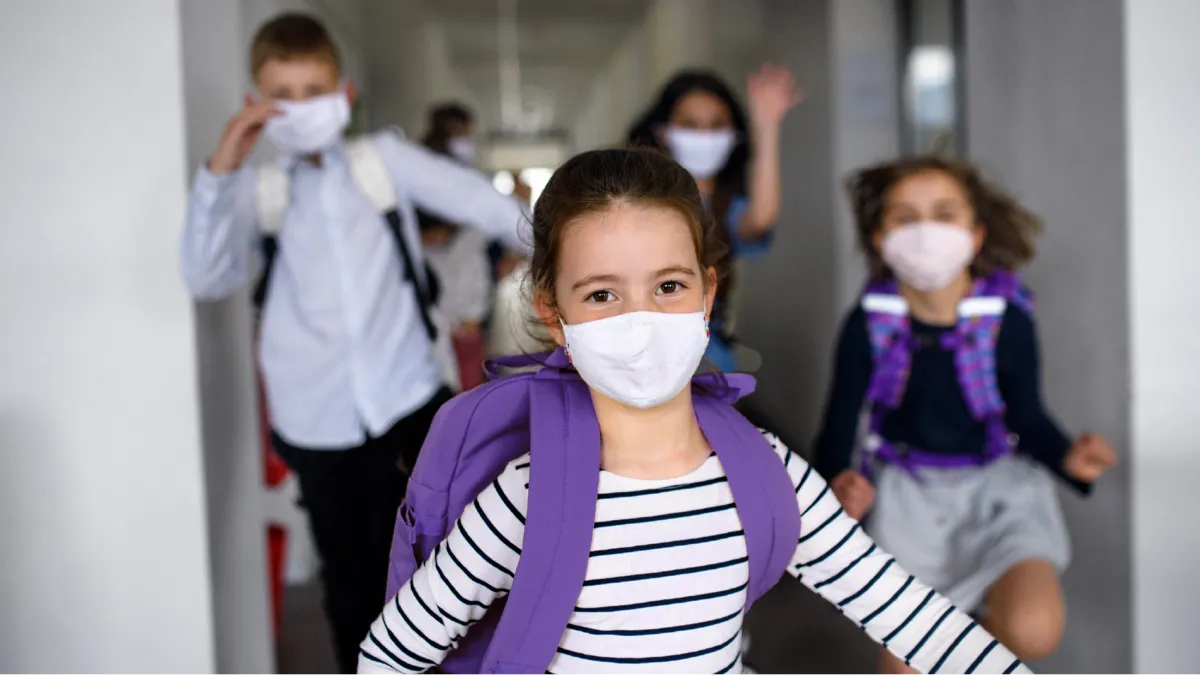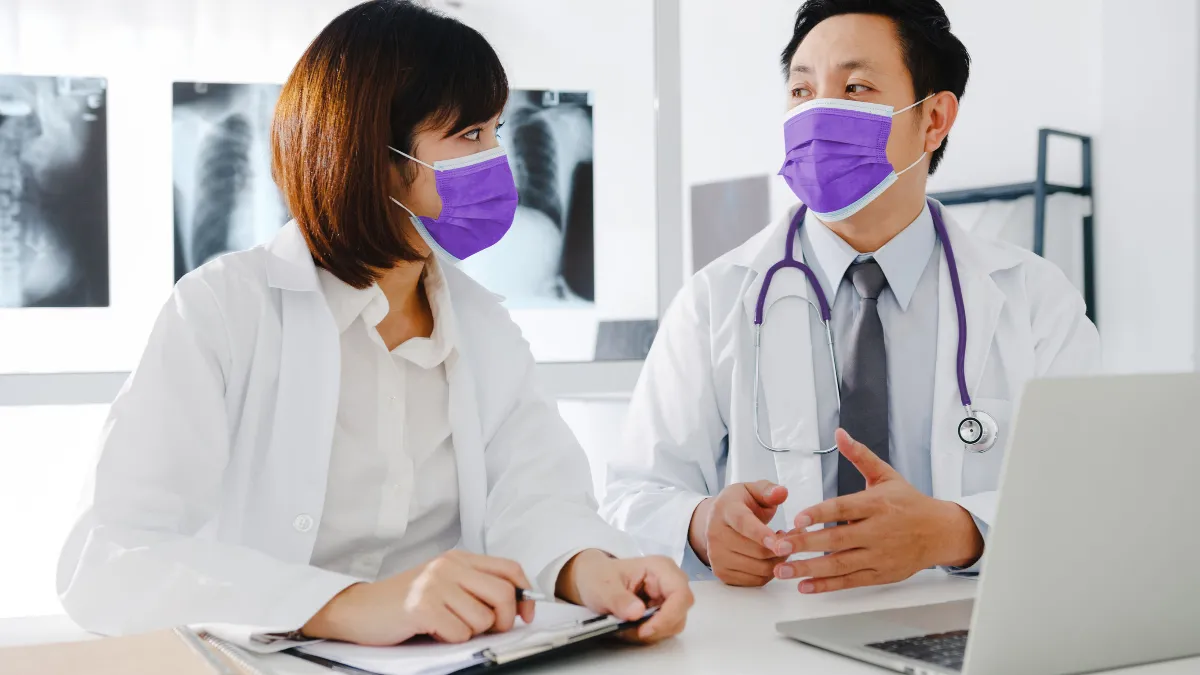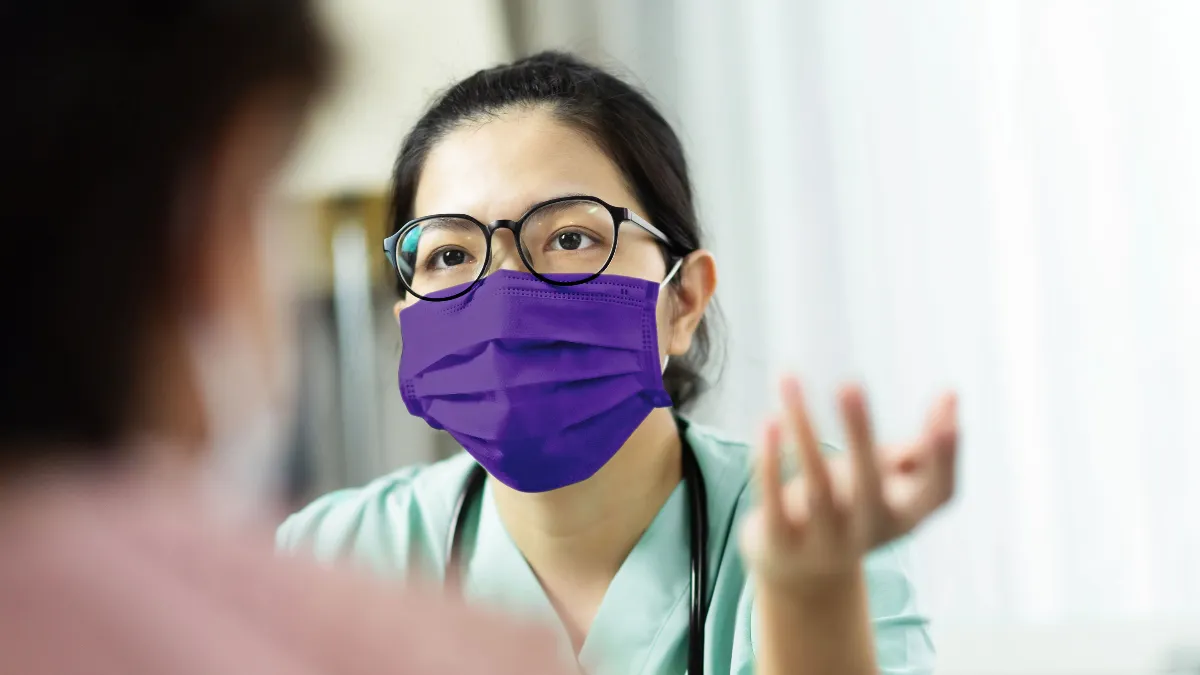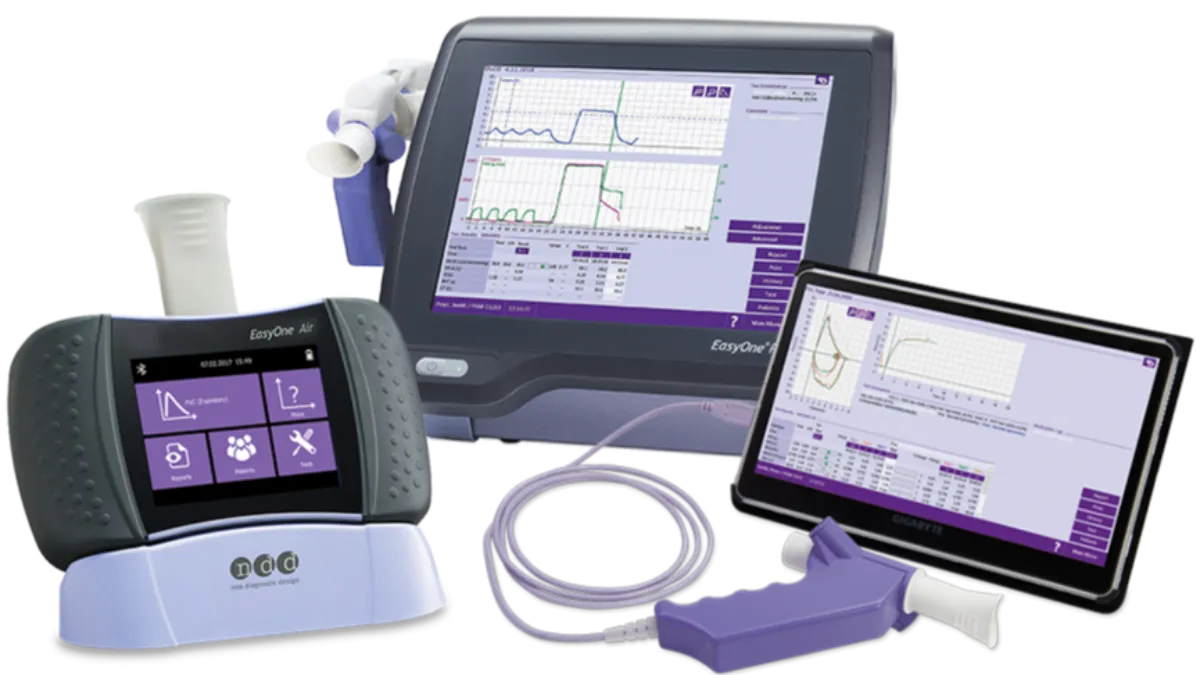Back to school with COVID-19

With the Delta variant of COVID-19 surging across the country (and potentially more dangerous to children than previous iterations), parents, school administrators, and pediatricians alike are struggling to find balance. Obviously, physical health and safety are essential, but what about the intangibles that go into the school experience? What should school look like in at a time where a contagious respiratory virus continues to run rampant? Fortunately, we’ve learned enough over the previous year of ‘pandemic school’ to have, if not definitive answers, at least some expert guidance.
To zoom or not to zoom #
In much of the United States, remote learning was the order of the day during the last parts of the 2019-2020 school year and throughout the 2020-2021 one. Some kids were able to thrive in this environment, while others ran into major problems. I saw this play out in my own house, with my two older kids (one in college, one in high school) struggling mightily, frustrated with the lack of connection and usual interaction. My middle schooler, on the other hand, was able to maintain all his social connections via online channels and his grades have never been higher. This scenario played out across the country, with remote learning strategies putting a spotlight on a variety of inequities in education, from access to broadband internet connections in the homes, to the closure of public spaces (like libraries) that often fill those gaps.1 In addition, between being thrown into an entirely new learning environment, enhanced concerns about other aspects of life that the pandemic worsened (such as food insecurities), watching the adults around them under significant stress, and often loss of social outlets due to isolation requirements, attention and focus was often lacking. Curriculum Associates, an educational research organization, found significant setbacks in educational attainment in children entering school in the fall of 2020. This “COVID slide” seemed to be most prevalent in younger students, with a major increase in the number of students entering second through fourth grade testing at least two proficiency levels below their current grade.2 And, in addition, the loss of the traditional social outlet of school potentially exacerbated mental health issues across the population, but especially in historically underserved populations.3
New school year, new strategies #
In 2021, we now at least have some understanding of how we can maximize safety. For example, while there have been outbreaks associated with schools, the rate of transmission within the schools tends to be less than the rate in the surrounding community.4 This is particularly true when mitigation guidelines from international organizations such as the World Health Organization (WHO), United Nations Children’s Fund (UNICEF), and the US Centers for Disease Control (CDC) are followed. Given what we now know about both the risks and the benefits of in-person education, the American Academy of Pediatrics (AAP) has determined that the benefits of actually going to school outweigh the risks in most situations. In fact, their guidance recommends that any policy discussions regarding instruction start with the objective that kids should be safely in school. The CDC concurs, stating that “safely returning to in-person instruction in the fall of 2021 is a priority.5”
That said, what does ‘safely in school’ look like? Many schools have devoted a great deal of resources over the past 18 months to improving ventilation, developing new transportation plans, and a variety of other strategies to prepare. While the mix of strategies will depend highly on what the pandemic looks like in individual communities, variations of these strategies are in play across the country. That allows for a ‘Swiss cheese’ model of risk reduction, where even if one layer develops a hole, the next layer can still be a barrier. Many of these layers are likely to be familiar to anyone a year in, including:
- Universal indoor masking. According to the CDC, everyone entering a school building who is over the age of two should be wearing a mask. Such requirements have become the subject of intense debate, as some feel that masks are somehow inappropriate or intolerable for younger kids. However, clinical and educational experts alike concur that kids of all ages are generally perfectly willing and able to mask up, particularly when such behavior is modeled by parents, teachers, and others.6 Masks are particularly important given that indoors, they help reduce the spread of virus from asymptomatic patients, reducing the risk inside the classroom. Given that none of the available vaccines are approved in any context for children under 12 and that the rapidly spreading Delta variant of the virus appears to impact kids far more than previous versions, masks are more essential than ever.
- Vaccination. While the preteen crowd is still waiting for an approved vaccine, anyone 12 and older is currently eligible. That means middle- and high-schoolers have access to one of the most effective mitigation strategies of all, which is beneficial as it turns out more to older kids who are generally less diligent about their masks.6 Of course, considering kids are the only ones in the school building, vaccines should be encouraged for teachers, administrators, and other staff members to keep everyone safe.
- Testing and monitoring. If the pandemic has taught us anything, it’s that the COVID-19 virus is very adept at getting past defenses. Thus, even with strict mitigation measures in place, outbreaks are next to inevitable. Screening programs and regular testing schedules can help identify asymptomatic students and staff, as well as detect acute outbreaks earlier. CDC guidelines encourage the use of at least weekly screening in areas where community spread is moderate, substantial, or high (which represents approximately 98% of the US as of Labor Day). The use of rapid testing (where results are obtained within 24 hours) also helps to identify outbreak clusters, and gives administrators and public health officials better information to adjust other strategies to more closely meet the needs of schools and communities
- Other strategies. There are plenty of other ‘little things’ that can be done in support of these larger initiatives. The now-ubiquitous idea of ‘social distancing’ goes along with masking to potentially reduce the spread of droplets from coughs and sneezes. CDC recommends working to keep kids at least 3 feet apart where possible, where the requirement for adults is still generally 6 feet. CDC also has resources available to help school systems make appropriate upgrades to their HVAC systems to help reduce the accumulation of viral particles indoors (in addition to more basic solutions, such as simply opening doors and windows when possible) on their guidance website at https://www.cdc.gov/covid/. And, of course, the basics like washing your hands regularly and staying home when you’re sick continue to apply across the board.
What about extracurriculars? #
Schooling isn’t just about the classroom. A great deal of learning takes place on sports fields, concert halls, and the other venues where kids of all ages participate in extracurricular activities. Last school year, many of these programs ended up cancelled or significantly modified, taking away yet more avenues of physical activity and creative expression. Fortunately, this year we know that many of the mitigation strategies that work during the school day also apply outside of classroom hours. Many fall sports in particular occur outdoors, the one area where COVID-19 has consistently had trouble spreading anyway. Care must still be taken in locker rooms, around concession stands, and other areas of congregation, but sensible precautions can allow these activities to continue. Similarly, masking can help for indoor activities that tend to produce extra aerosols (think band and choir, or indoor sports). As long as participants and spectators alike stick with the Swiss cheese model, students should be able to look forward to an entire year of once again doing what they love.
Learn with care #
We know a great deal more about COVID-19 than we did at the start of the last school year, and we’ve had another year to make preparations and adjustments. Unfortunately, we still have intense debates raging outside the science about what’s ‘best’ for students. As with anything in healthcare, of course, there is simply no single solution about what is ‘best’ for everyone, nor can we progress through the pandemic if we simply wish it away. However, by taking some basic precautions, following evidence-based and expert-reviewed guidelines, and staying community-minded, we can give our next generation an opportunity to get back on track as they go back to school.
Jacques A, Ambrose H. Inequities During COVID-19. 2020. doi:10.1542/peds.2020-1501 ↩︎
New Data from Curriculum Associates Quantifies Impact of COVID Learning Loss; Raises Questions about At-Home Testing | Curriculum Associates. https://www.curriculumassociates.com/about/press-releases/2020/10/covid-learning-loss. Accessed September 3, 2021. ↩︎
Shah K, Mann S, Singh R, Bangar R, Kulkarni R. Impact of COVID-19 on the Mental Health of Children and Adolescents. Cureus. 2020;12(8). doi:10.7759/CUREUS.10051 ↩︎
Science Brief: Transmission of SARS-CoV-2 in K-12 Schools and Early Care and Education Programs - Updated | CDC. https://www.cdc.gov/coronavirus/2019-ncov/science/science-briefs/transmission_k_12_schools.html#schools-cov2-transmission. Accessed September 3, 2021. ↩︎
Guidance for COVID-19 Prevention in K-12 Schools | CDC. https://www.cdc.gov/covid/. Accessed September 7, 2021. ↩︎
Face Masks and Kids: Separating Fact From Fiction. https://www.edweek.org/leadership/face-masks-and-kids-separating-fact-from-fiction/2021/08. Accessed September 7, 2021. ↩︎ ↩︎







